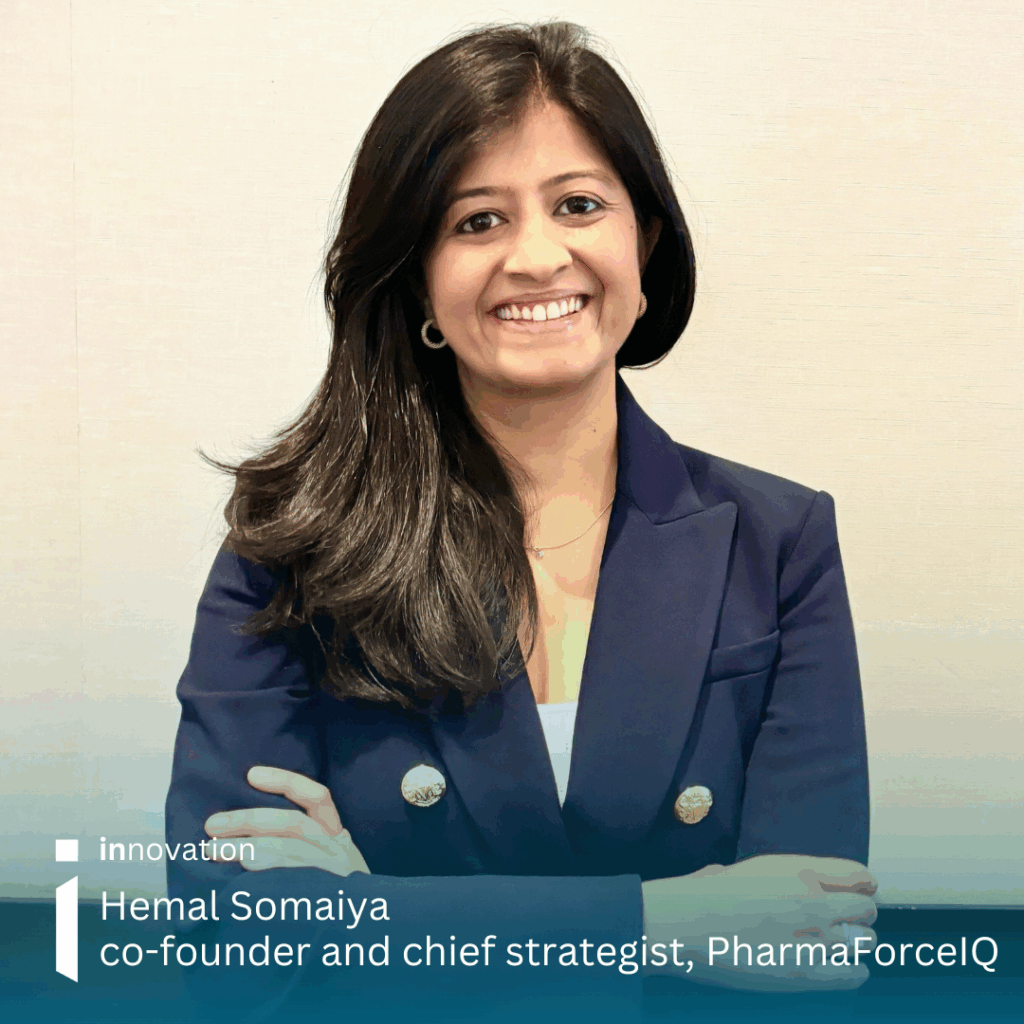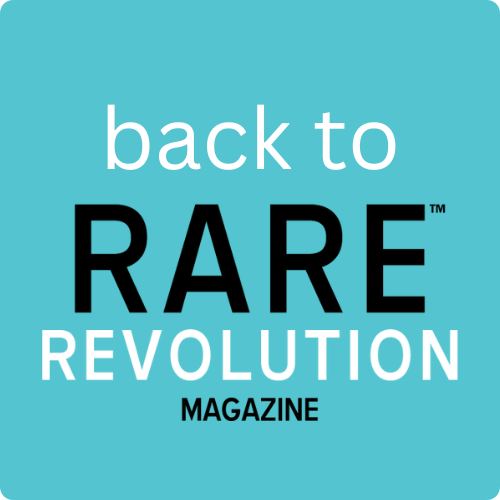“Spray and pray marketing no longer works”: finding the moments of opportunity
Interview with Hemal Somaiya, co-founder and chief strategist, PharmaForceIQ
Estimated reading time: 9 minutes


PharmaForceIQ stands at the forefront of pharmaceutical marketing innovation, as the industry’s first fully integrated optichannel platform. By seamlessly connecting real-time data to the deployment of tailored outreach for healthcare professionals and patients, PharmaForceIQ delivers measurable success through its proprietary machine learning technology. At the helm of the company’s strategic vision is co-founder and chief strategist, Hemal Somaiya, an industry leader with considerable experience in pharmaceutical marketing and brand launch execution
Harnessing the power of real-time insights, Hemal Somaiya and the team at PharmaForceIQ enable the pharma sector to move beyond traditional, broad omnichannel outreach strategies, unlocking effective, personalised engagement that drives meaningful results via their optichannel approach.
Evolving pharma marketing—omnichannel vs. optichannel
The key difference between omnichannel and optichannel approaches in pharmaceutical marketing lies in personalisation and real-time engagement. Omnichannel strategies “connect the dots across any and all channels, whether it’s digital channels, in the field or peer-to-peer interactions.” However, as Hemal explains, “while that is important, if you just connect the dots between the channels you’re not solving for that right HCP at that right moment of opportunity with the right message.”
Optichannel goes a step further. As Hemal describes: “It’s a step above omnichannel, where we are reaching them in a personalised real-time manner based off of their online behaviour. You’re optimising, not just connecting the dots. Now we are going to use this real-time, data driven approach to optimise that outreach at channel level, publisher level, content level.” This ensures that the right message reaches the right person at precisely the right moment, making outreach far more effective than traditional strategies.

Precision in action: overcoming rare disease hurdles with real-time data and personalisation
These strategic innovations don’t just overcome rare disease challenges—they deliver measurable, high-impact results.
“We’ve had 100% renewals across all our clients, which speaks volumes to the fact that the results you see with the optichannel approach are truly meaningful. You not only see around 20 to 30% increase in your leading indicators of success but you also see meaningful difference from lagging indicators in terms of prescription lift and revenue lift.”
Hemal outlines concrete benefits seen during and after a recent paediatric low-grade glioma (PLGG) launch. Specifically, the team was able to identify and reach additional, previously untargeted HCPs: “We identified additional HCPs that were not on existing target lists and were able to reach them in a personalised manner. They engaged, and then we converted them to prescription lift.” This agile, data-driven approach delivered measurable revenue lift, illustrating the transformative power of their optichannel approach.
These HCPs never attended a speaker programme, never participated in an ad board and were otherwise not on the radar. We were able to not only identify the opportunity but convert that opportunity and show a resultant revenue lift.”
Rare diseases like PLGG present significant hurdles for pharma marketers, with challenges in both identifying eligible patients and engaging the right HCPs. Hemal explained the gravity of this issue: “It is very difficult to find the eligible patients—that one patient opportunity presents itself in this community setting, once in a year or once in two years. Therefore, the ‘spray and pray’ approach to messaging doesn’t work. This has to be targeted and personalised.” Traditional approaches, characterised by static outreach and generic call plans, are insufficient in such an environment. Hemal stresses, “You have to ensure that you can do more with less, and that’s where our optichannel approach is extremely powerful.”
The significance of this approach is especially pronounced in rare disease where expert HCPs and patients are hard to find, and the cost of finding them can be high. Hemal explains, “One patient will pay for the platform cost meaning every opportunity counts, and every patient is extremely important. And it’s not just from a revenue and numbers’ perspective, but from the patient perspective. In reality these patients who were otherwise never going to be educated about PLGG via their HCP now have access to support, education and treatments—specific for their needs.”
A next level approach to connectivity and leveraging behaviour data
Describing their strategy Hemal shares: “The way we approached this is we identify ‘moments of opportunity’ for a brand and/or an indication based off of a patient journey. We have a data ecosystem where we are plugged into—all sorts of real-time data feeds from insurance claims, electronic health records (EHR), lab results and more. We can decipher ongoing, real-time feedback on what these HCPs are doing—digitally searching for PLGG, reading a publication on PLGG, whatever that may be.” This allows a brand team to reach the right HCP, at the exact moment of opportunity, with the right, personalised messaging, which might be around disease education, diagnosis protocols or treatment options and aftercare.
The team has also deployed a similar but distinct approach for reaching patients by creating micro-audiences or segments. PharmaForceIQ’s approach to capturing patient audiences in a compliant way represents an innovation in real-time precision messaging.
Hemal explains the fundamental difference from traditional marketing: “Everything we do on the patient side has to be at that segment/group or audience level. Traditionally, how marketing in Pharma is done, is you would create one audience at the beginning of the year, which you will serve messaging to through a 12-month duration based on historic data and information available.”
In contrast, PharmaForceIQ leverages real-time data feeds and dynamic micro-segmentation to ensure outreach is always timely, specific, and compliant. “What PharmaForceIQ is doing is different. We have all of these real-time plugs across the data ecosystem, but also real-time to deploy to consumers, leveraging our integrations with 25,000 plus websites. What we do is, instead of that one static audience, we are creating micro audiences on a weekly basis based off individuals who are getting diagnosed.”
Of course, unlike the HCP approach patient-level targeting is avoided for privacy. Hemal expands, “You understand who’s getting diagnosed behind the curtain, in a compliant manner. You connect the dots with socio-economic data sets or other shared demographics to create the micro audience around that patient. We can then target these micro audiences with targeted education and content, all while ensuring compliance with the HIPAA (Health Insurance Portability and Accountability Act) threshold.”
In practice, this approach leads to smaller, more relevant audiences and less wasted effort or budget.
“Your audience size is rather small, but by creating these micro audiences we’re now increasing the chances of hitting the right opportunity— reducing spend.”
By constantly refreshing these micro-segments and deploying tailored messages, PharmaForceIQ ensures the right patients—and their surrounding networks—receive information at precisely the moment it matters most, all while maintaining strict compliance and maximising marketing impact.
Driving meaningful HCP education for the long-term
Building sustained awareness among HCPs is essential in rare disease launches like PLGG, as many HCPs “may have never seen or diagnosed a patient before,” as Hemal explains. Recognising that a single PLGG case might present only once or twice in an HCP’s entire career, PharmaForceIQ’s optichannel approach prioritised continuous education and outreach. Beyond real-time targeting, the team also leveraged predictive modelling, “Predicting three, six months or 12 months into the future, to predict when the patient opportunity is going to be presented to Dr X, means we can get ahead and educate him on testing, proper diagnosis and the brand.” This ongoing, highly tailored engagement ensured that HCPs were well-prepared and aware whenever a rare PLGG patient might need their expertise and is an approach that is highly deployable to other rare disease areas.
By ensuring that targeted HCPs are not only educated but continually re-engaged, PharmaForceIQ’s approach has a direct and meaningful impact on patient outcomes. As Hemal describes, the platform’s real-time data and micro-segmentation make it possible to “identify all important moments of opportunity and create that personalised surround sound that will truly increase that share of voice in the minds of the customers.” This means that when a rare disease case like PLGG arises, prepared HCPs are much more likely to recognise and appropriately address the condition. Hemal underscores the value of these efforts, noting:
“We are all in this industry because we care for patient lives. Optichannel-enabled awareness doesn’t just improve engagement metrics—it translates into real-world positive outcomes for patients who might otherwise have been missed.”

Beyond the horizon—the future of data-led marketing
Looking ahead, Hemal firmly believes the optichannel strategy is poised to become an essential standard in rare disease and specialised medicine.
“I see this being a gold standard for all rare disease launches, because each and every launch has the same problem to solve in the rare space.”
“Resources are tight. Our field force presence is limited, and we have these very rare patient opportunities being presented across this massive list of HCPs that we can go after. So how do we get smarter, better and more cost efficient? Our optichannel approach allows you to do that across general, specialist and rare medicine.”
Hemal also highlights a shift in industry thinking, accelerated by market pressures and technological advances: “There’s a learning curve pharma marketers went through and are continuing to go through over the course of the last three to five years. The same old methodologies no longer work because the market is shifting and evolving, in no small part due to AI and the availability of vast personalised datasets. For the industry to successfully adapt, marketers and brand leaders must embrace a mindset shift that values continuous learning and strategic flexibility. As Hemal observes, “Marketers need to be on top of it, and they need to think about every launch and every therapeutic area and reaching each of these target audiences in a unique strategic manner.”
Investing in robust data infrastructure, upskilling teams to leverage advanced analytics and prioritising real-time, personalised outreach will be essential. By fostering adaptability and placing data-driven decision-making at the heart of campaign planning, industry players can maximise both impact and efficiency in today’s evolving landscape. As resources tighten and patient opportunities become ever more precious, this data-driven, real-time, personalised approach could be set to reshape how the industry tackles its most complex challenges—offering smarter, more impactful and more cost-efficient marketing solutions for the future.
Connect with Hemal
Connect with PharmaForceIQ
innovation spotlights the future of RARE through a technological lens. To access more innovation articles click below.

